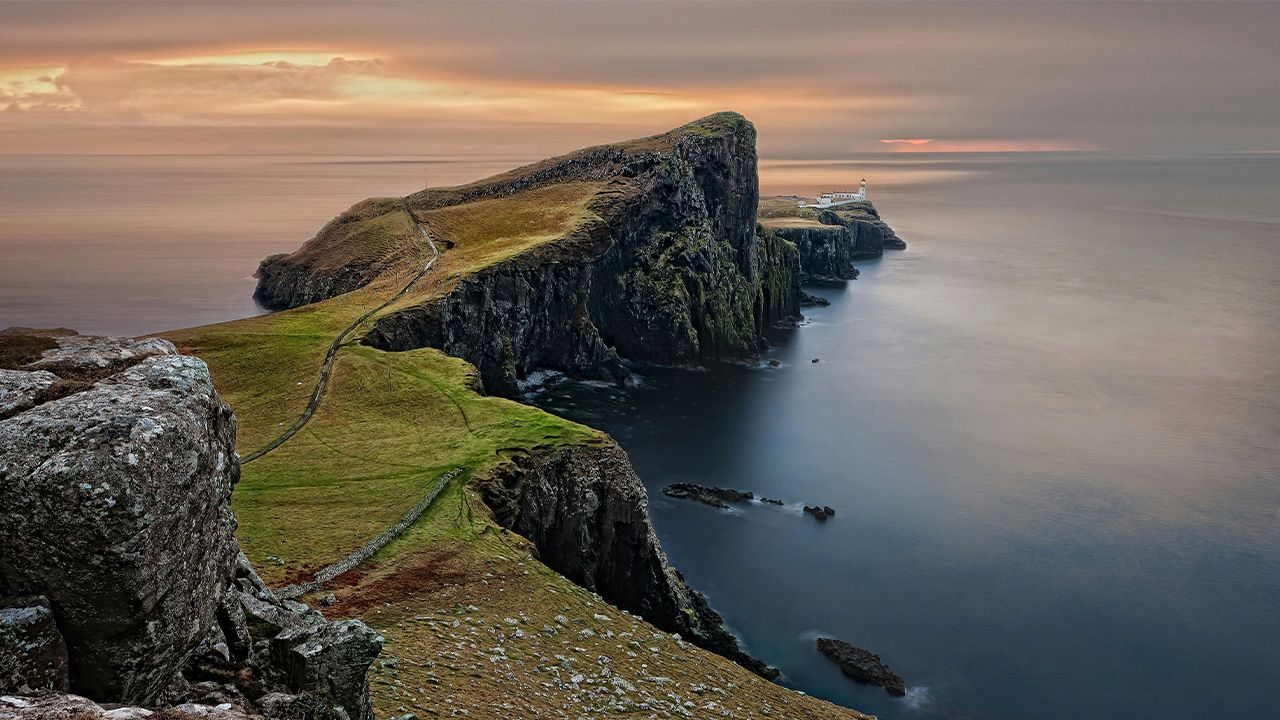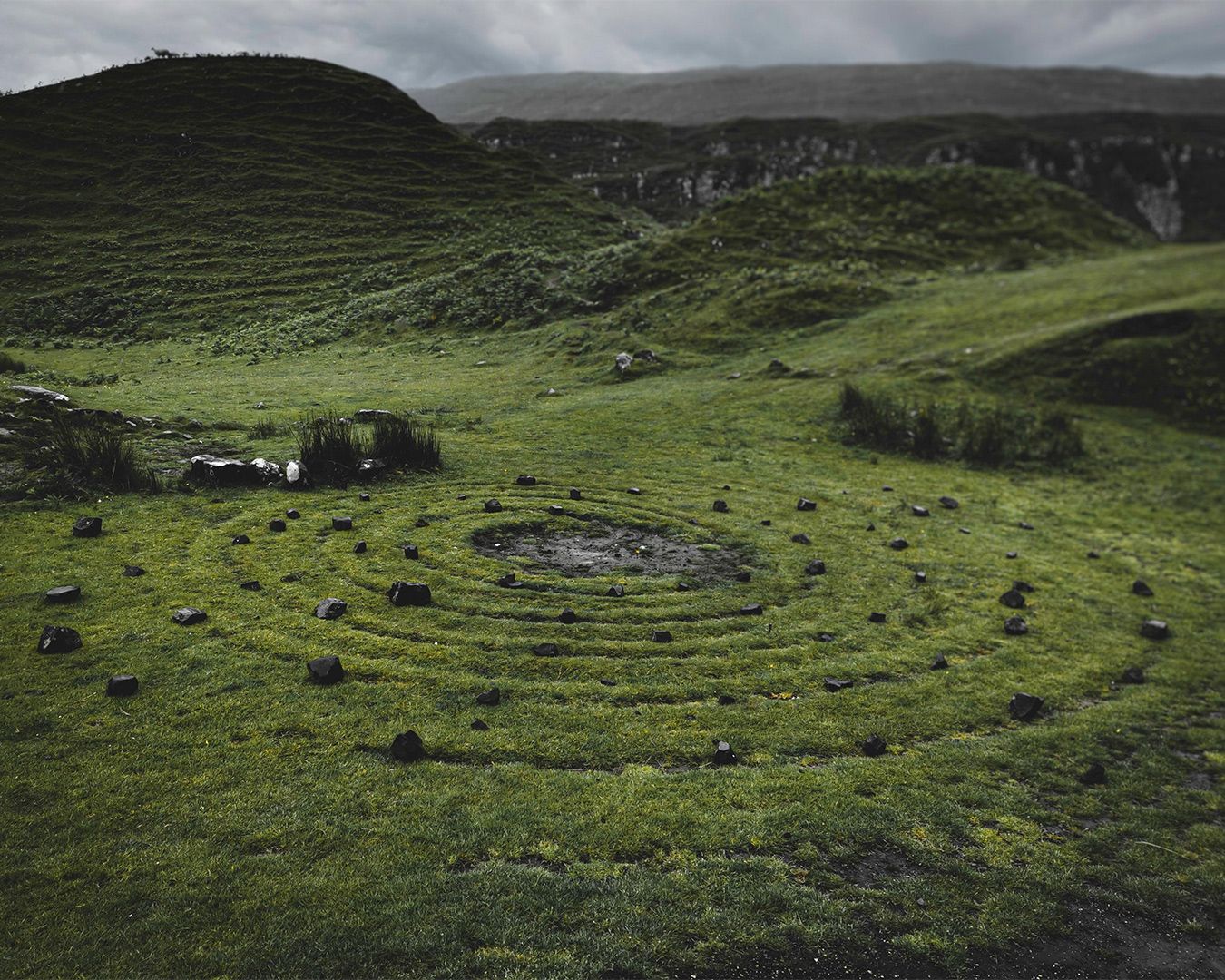The Isle of Skye can be found in Scotland's northwest coast, and it is the largest island comprising the archipelago of the Inner Hebrides. With barely ten thousand inhabitants, it is one of the most visited spots in the country for very good reason.
The history of Skye straddles the Medieval kingdom of Dalriada and the Viking raids which took over it, integrating it into a warmongering culture halfway between the Celtic and the Norse: The Lordship of the Isles, whose main representatives in Skye were the MacDonald and MacLeod clans.

Some tourist attractions in Skye include the impressive geological formations in the Trotternish peninsula, the mountainous landscapes of the Cuillin Hills, the cliffs at Neist Point, Dunvegan Castle, and, of course, its picturesque capital, Portree.
How to reach the Isle of Skye
Skye's transportation choices are fundamentally three: by car, by bus or train and, indeed, by ferry. The easiest way to reach Skye is by car, through Skye Bridge and the A87 road. You can reach Portree in around five hours from Glasgow or Edinburgh.
One of the most scenic (but longer) ways to reach Skye is a combination of a train ride up to Mallaig and, from there, taking a ferry to Armadale, in the south of the island...over the sea to Skye!
Should you prefer it, you can also take a train to Kyle of Lochals, and the entrance to the island, and then cross the bridge by bus. You can also reach Skye via bus run by Citylink from Glasgow or Inverness.

What to see in the Isle of Skye
Old Man of Storr
The Trotternish peninsula is the greatest natural feature in the Isle of Skye and, amidst its locations, the Old Man of Storr stands out, an enormous stone pinnacle looming high above Staffin Bay. The hiking trail to the Storr and back takes two hours and has a four-hundred-meter slope. The views from up high are breathtaking. Go early because the parking lot fills up in the blink of an eye!
Other interesting locations in Trotternish include the Kilt Rock waterfall, its landscape. The Quiraing, the Duntulm lookout, Fairy Glen and the Museum of Island Life, where you will be able to visit the burial place of hero Flora MacDonald.

Fairy Pools
The Fairy Pools are a series of lovely natural springs in Skye, on the foothills of the Cuillins. The Fairy Pools hiking trail meanders through the Glen Brittle creek amongst waterfalls, spellbinding landscapes and pools which, on sunny days, glisten with turquoise hues. The walk there and back takes less than an hour but, should you crave more, you can extend it and take the two-hour circular trail to the foot of the mountains. Make sure to have proper footwear and a raincoat!

Dunvegan Castle
Dunvegan Castle is the most visited monument in Skye. Located in the northwest of the island, Dunvegan's history is intertwined with its dwellers, the rulers of the MacLeod clan. Even though the original building dates from the 1200s, very little remains of it, since it was almost completely rebuilt during the mid-1800s.
Besides a visit to the indoors of the castle, its grounds and the boat trip to get to know the local seal community are well worth it. Dunvegan Castle is open every day from April to October, from 10:00 to 17:00. Check out further information here, on the castle's website!

Neist Point
The Neist Point cliffs are one of the most beautiful and unspoiled spots in the Isle of Skye. The road leading up to them is a poorly maintained single track, so be extra cautious during your drive.
Once there, the views on Neist Point from the parking lot will baffle you. If you wish to reach the lighthouse or the main ravine, you only have to walk down the stairs and follow the marked trail. It is a wonder to watch the sun set there on clear days!

Portree
Portree is Skye's tiny capital, and, despite its size, it teems with life and bustle, especially during summertime. In this village you will find souvenir stores, a supermarket, delightful cafés such as the Birch Café and Café Arriba, pubs like The Isles and plentiful lodging options. Don't miss out on the harbor promenade and the views of its colorful houses across it!
Some of the best restaurants in Portree include the Scorrybreac, Sea Breezes or Caberfeidh Restaurant. Should you prefer some pizza to take away, the ones at Pizza in the Skye are mouthwatering.

Activities in the Isle of Skye
- Hiking and nature
Enjoying hiking in Skye, as well as its wildlife and greenery, is as simple as strolling around any spot on the island. Everywhere you look there will be astonishing landscapes, mist-capped mountains, cliffs, waterfalls and millions of sheep. The best locations to go on a hiking trail are, nevertheless, the Cuillin Hills, in the south of the island, and the geological landscape of The Quiraing in the north.
- Cultural and foodie visits
Even though the greatest appeal of the island is its nature, Skye is by no means without cultural and foodie allure. If you are a whisky buff, under no circumstances should you miss out on a visit to Talisker distillery and, if you are a gastronomy connoisseur, drop by high-cuisine restaurants such as Skye Monkstadt 1745, The Three Chimneys, Loch Bay or vegetarian Chidakasha Skye.
Tips to visit the Isle of Skye
- Best season to visit
The best season to visit Skye is between April and September, when light hours are longer and the weather in the island is milder. Still, try to avoid the high season in Skye during the months of July and August, since it gets crowded and accommodation prices go through the roof. May, June or September are your best picks!
- Accommodation recommendations
Accommodation in Skye is often a reason for concern, given how the choices are not extensive, run out easily and may be pricey if not planned carefully. Here are some suggestions of hotels, B&Bs and hostels on the island. Book your accommodation in Skye as early as possible!
Scorrybreac B&B -- a lovely, traditional B&B in the village of Broadford.
Cuillin Hills Hotel -- one of the classiest hotels in Portree.
House of Juniper -- a luxurious hotel placed in Broadford.
Portree Youth Hostel -- a hostel in downtown Portree.
Should you prefer to stay in a camping site, take a look at Camping Skye, as well as Skye Pods in Broadford and Grebrittle Campsite in the south of the island.
How long does it take to visit the Isle of Skye?
Concerning how many days in Skye are enough to explore the island, there is no easy answer. However, one thing is certain for sure: the longer you stay, the better, since the isle offers activities and beauty galore. Here follows some suggested routes in Skye!
If you are only spending a single day in the island, focus on its capital, Portree, and the Trotternish peninsula: it's the most accessible area and it has the highest number of trails and activities.
Should you be staying for two days, add a visit to Dunvegan Castle and an evening at the Neist Point cliffs.
And should you be lucky enough to stay for longer, make sure to explore the Fairy Pools, Glen Brittle, Sligachan, Elgol, Loch Coruisk, Saint Columba's riverside graveyard, Armadale Castle or Coral Beach.
Be that as it may, and wherever you go, you will be smitten by Skye!

Frequently Asked Questions
- Do I need a car to explore the Isle of Skye?
Even though it is not a must to have a car in Skye, it is the best way to explore the island, since public transport in Skye does not reach some of its landmarks.
- Which are the best spots for taking pictures?
Shooting pictures in Skye is one of the best reasons to visit the island. Some of the best photographic spots in Skye include Neist Point, The Quiraing, The Old Man of Storr, the Cuillin Ridge or the colorful houses in Portree.
- What to do in Skye on a rainy day?
Should rain take you by surprise in Skye (which is highly likely) you can visit locations such as Talisker distillery, the Museum of Island Life or the dinosaur displays at Staffin.